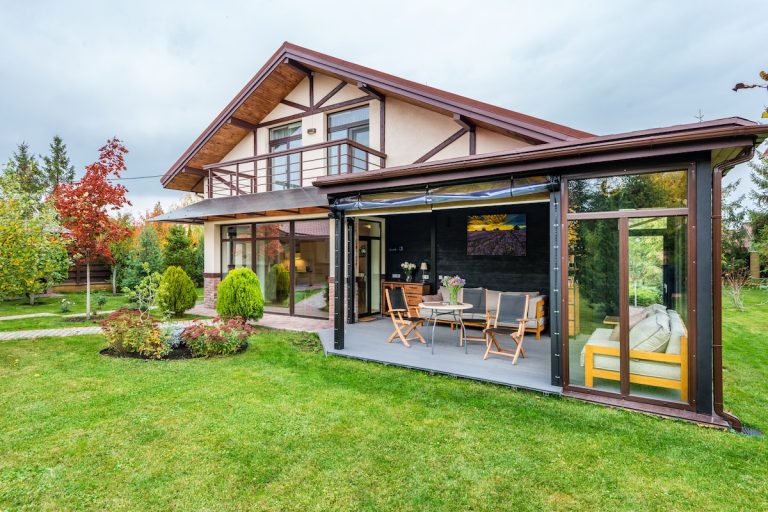- Prepare for the changing seasons by installing insulation, weather stripping, and cleaning air conditioners.
- Regularly maintain HVAC systems to ensure optimal temperature indoors and reduce energy consumption.
- Develop good habits like turning off unnecessary lights and appliances when not in use, using curtains to keep out direct sunlight, etc.
- Keep windows/doors open briefly in the morning to let fresh air in and close them again when temperatures start rising.
- Setting the indoor temperature between 68 to 74 degrees Fahrenheit (20-24 degrees Celsius) is optimal for comfort.
Keeping a comfortable temperature in the home is incredibly important for both physical and mental health. Poor temperature control can lead to physical exhaustion, lethargy, stress, headaches, and other health issues. Not to mention, it can make people uncomfortable in their own homes. Therefore, a suitable home temperature is essential for everyone to enjoy a healthy atmosphere.
It’s not just about comfort; maintaining an optimal temperature at home also helps conserve energy and reduce bills. According to statistics from the US Department of Energy, heating and cooling account for about 48% of the average American household’s energy consumption. An efficient heating and cooling system keep utility bills low while providing comfortable indoor temperatures.
Having the right temperature indoors can also help prevent the spread of airborne viruses like influenza or colds. A study conducted by researchers at Stanford University found that the optimal temperature range for preventing virus transmission was between 68 to 74 degrees Fahrenheit (20-24 degrees Celsius). At this temperature range, airborne viruses are less likely to survive or be transmitted from person to person. The study also suggests avoiding extreme temperatures as they make it easier for virus particles to travel through air currents and enter our respiratory systems upon inhalation.
However, it might be challenging to keep the home at one temperature all year round without running the risk of wasting energy. To ensure optimal temperature indoors, here are a few steps to consider.
Prepare for the Seasons

Keeping the home at an optimal temperature throughout the year is essential for comfort and energy efficiency. Homeowners must be aware of the changing seasons to prepare their homes properly for temperature fluctuations. Here are a few things you should do for every season:
Spring
During spring, many homeowners tend to shut off their heating systems before turning on the air conditioning. The higher temperatures during this season can make it more difficult for houses to retain cool air, so proper insulation needs to be in place. This will help keep the home cool without relying too heavily on air conditioning units. Properly sealing doors and windows and applying thermal window films can also help enhance insulation and reduce heat infiltration into the home.
Summer
During summer, air conditioners should be regularly maintained and cleaned, so they don’t become overwhelmed by high temperatures outside. Insulation should still be maintained even when air conditioners are used, as this will reduce energy consumption while keeping indoor temperatures comfortable. As a precautionary measure, homeowners should set thermostats at 78 degrees Fahrenheit (<25 degrees Celsius) or higher so that their ACs aren’t working harder than necessary. Using fans or dehumidifiers also helps reduce humidity levels indoors while cooling rooms down faster than ACs alone.
Winter
As winter approaches, homeowners must check if their furnace is working correctly and perform preventive maintenance if necessary. Installing weather stripping around windows and doors helps prevent drafts from entering homes so that furnaces don’t have to work too hard to maintain indoor temperatures. It’s also important to note that space heaters must only be used when necessary and never left unattended or running overnight.
Autumn
During autumn, homeowners can use their thermostats to adjust temperatures indoors when the temperature outside begins to drop. Thermostats should be set at 68 degrees Fahrenheit (20 degrees Celsius) or lower during autumn and winter. Proper insulation is still necessary even if indoor temperatures are kept low; this will help retain heat and reduce energy consumption while maintaining comfortable homes.
Perform HVAC Maintenance

Homeowners must ensure that their HVAC systems are regularly serviced and maintained by professionals. This ensures they run efficiently and don’t waste energy while keeping indoor temperatures comfortable. Essential maintenance includes changing air filters every month, checking for leaks in the system, cleaning vents and ducts, checking refrigerant levels, and so on.
There will be a few tasks complex enough that they require the help of a professional HVAC technician. These could include checking if the system is adequately sized, sealed, and insulated, testing airflow levels, and testing for air leakage or duct leaks. Some specialists provide heat pump short cycling services to ensure maximum efficiency and comfort indoors.
Follow Good Habits
Finally, it’s essential to develop good habits that support energy efficiency in the home. This includes turning off unnecessary lights and appliances when not in use, using curtains or shades to keep out direct sunlight, and avoiding activities that generate heat, such as baking or using specific devices during summer.
Fresh air might be ideal for maintaining an optimal temperature at home. Still, it’s important to open windows or doors briefly in the morning and close them again when temperatures start rising. This allows homes to stay cool during summer without running the risk of overheating.
Final Thoughts
Keeping the home at the ideal temperature can help reduce energy consumption while ensuring comfort and health indoors. With these steps in mind, homeowners can maintain a comfortable atmosphere while saving money on utility bills.







